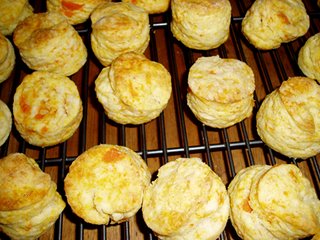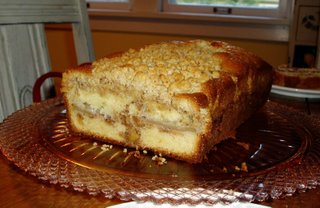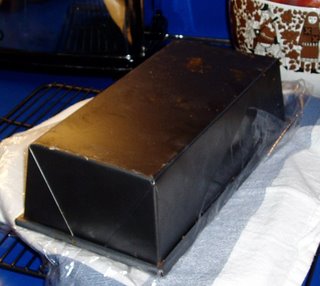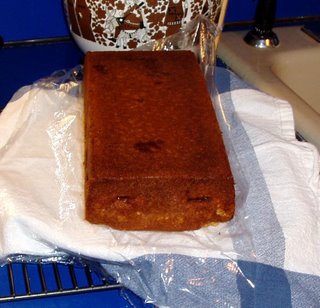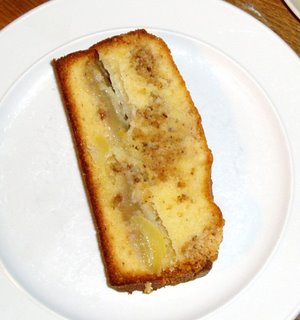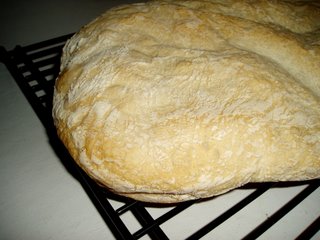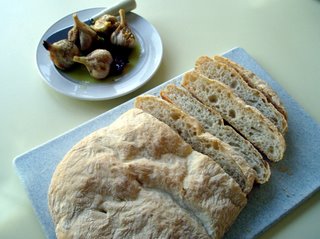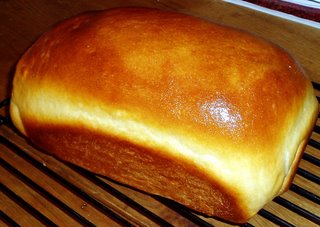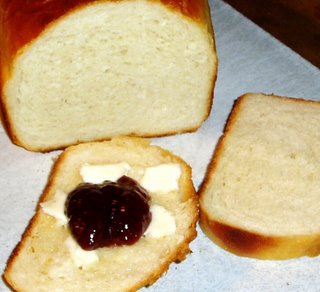
Tuesday, October 24, 2006
My neighbor Laurel invited me for a dinner party on Tuesday, and, when I asked if I could bring anything, said, "How about a loaf of your good bread?" Well, when she put it that way, I couldn't say no.
As Evil Cake Lady (who really does not seem to be at all evil) reminded me, breads can actually be made without mixers, and I am ready to knead away by hand until my KitchenAid is returned to me.
But the problem here was not the mixer so much--it was time. I had a party at my house on Monday, and I had to go to work on Tuesday. I spent a lot of time pondering this question, and finally decided to make the bread at work. Yes..it would be National Take Your Bread to Work Day!
After I got rid of my guests on Monday night, I mixed the sponge and let it sit out for an hour, then put it in the refrigerator while I slept. The next morning, I added the cheese, mustard, and cayenne to the basic white dough recipe and put it in my dough rising container. Then I gathered up everything else I needed and sped to work in time for an 8:15 meeting. By 9:30, the dough was ready to be turned out and shaped. My friend Susan, who is the kind of person who watches every TV special about the alarming number of germs found in hotel rooms, yelled at me: "You can't put that dough on that table! It's disgusting!"
"Ha!" said I. "I'm way ahead of you. I brought in my disinfecting cleaner." "You can't use that gross office dishcloth," she warned. "This is my own perfectly clean dishcloth." "Your bread will taste like disinfectant!" "I brought in a second clean dishcloth to wipe the disinfectant off." Oh, I was pleased with myself for thinking of everything.
At 11:00, the dough had doubled again, and was ready to be put in the loaf pan, which I had, of course, brought--because I thought of everything--and covered with oiled plastic wrap--did I mention I thought of everything. The bread was really rising very nicely because at the end of October, my office is considerably warmer, and much less drafty, than my house.
At 12:30, I drove my loaf pan home and put it in the oven. The cheese-flecked dough was an inch above the top of the pan, and it looked great. By 1:45, the bread was done (it looked perfect), and I went back to work for our monthly office birthday party.
Yet the bread was not quite as perfect as I had thought. When I tasted it, at the dinner party, I got a puzzled frown on my face. Not a frown of disgust, just puzzlement....something wasn't right. I was puzzled enough that I went back over the recipe and suddenly realized that I'd forgotten the salt! You really wouldn't think that forgetting a teaspoon of one ingredient would be enough to make you frown.
And, to make matters worse, I had brought along unsalted butter to the party for the bread. Fortunately, there were a lot of highly flavored ingredients in this bread, so the lack of salt didn't make it bland--just not perfect.
This is what happens when you try to read a recipe and mix something up at 6:15 a.m. after having had only half a cup of coffee. Or maybe I shouldn't blame the coffee. Maybe I should chalk it up to getting my just deserts for being so smug about being Wonder Woman. She's never late for meetings! She whips up amazing breads while writing briefs! She always has everything under control! Not.





